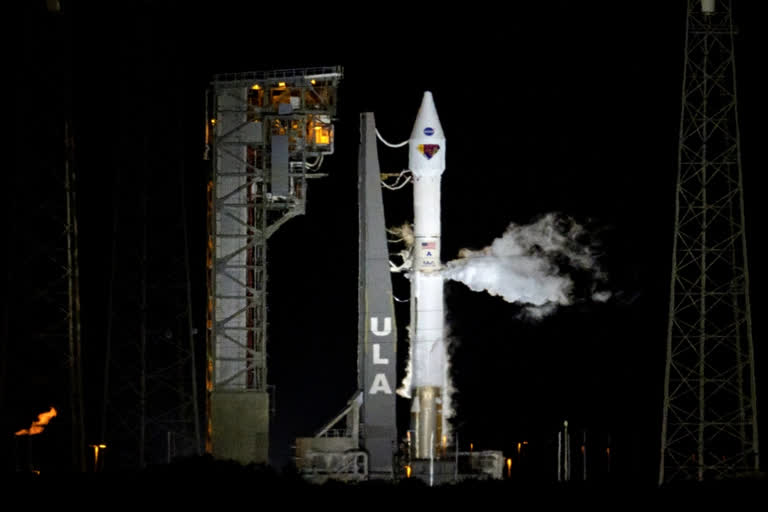Cape Canaveral (Florida): A NASA spacecraft named Lucy rocketed into the sky with diamonds Saturday on a 12-year quest to explore eight asteroids.
Seven of the mysterious space rocks are among swarms of asteroids sharing Jupiter's orbit, thought to be the pristine leftovers of planetary formation.
An Atlas V rocket blasted off before dawn, sending Lucy on a roundabout orbital journey spanning nearly 4 billion miles (6.3 billion kilometres).
Lucy is named after the 3.2 million-year-old skeletal remains of a human ancestor found in Ethiopia nearly a half-century ago. That discovery got its name from the 1967 Beatles song "Lucy in the Sky with Diamonds," prompting NASA to send the spacecraft soaring with band members' lyrics and other luminaries' words of wisdom imprinted on a plaque. The spacecraft also carried a disc made of lab-grown diamonds for one of its science instruments.
The paleoanthropologist behind the fossil Lucy discovery, Donald Johanson, said he was filled with wonder about this "intersection of our past, our present and our future."
"That a human ancestor who lived so long ago stimulated a mission which promises to add valuable information about the formation of our solar system is incredibly exciting," said Johanson, of Arizona State University, who travelled to Cape Canaveral for the launch.
Lucy's $981 million mission is the first to aim for Jupiter's so-called Trojan entourage: thousands — if not millions — of asteroids that share the gas giant's expansive orbit around the sun. Some of the Trojan asteroids precede Jupiter in its orbit, while others trail it.
Despite their orbits, the Trojans are far from the planet and mostly scattered far from each other. So there's essentially zero chance of Lucy getting clobbered by one as it swoops past its targets, said Southwest Research Institute's Hal Levison, the mission's principal scientist.
